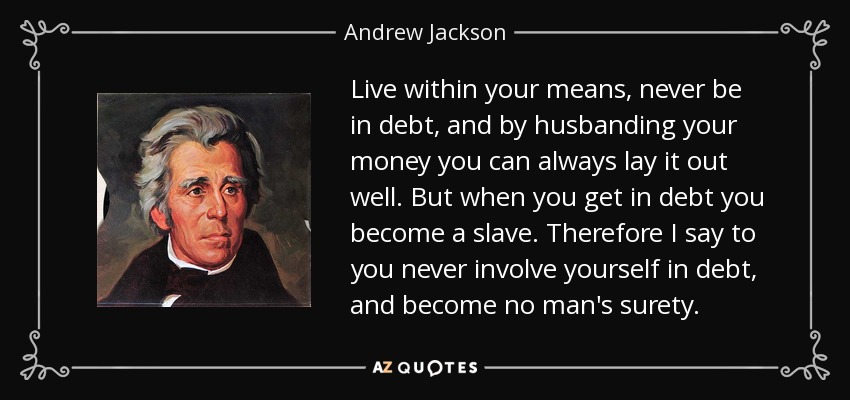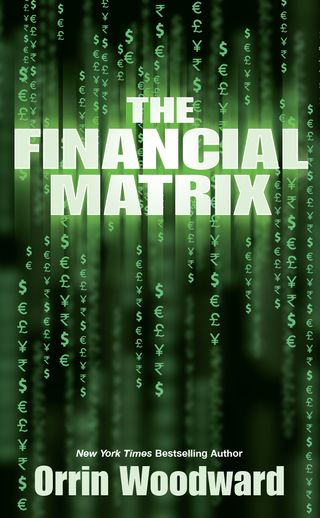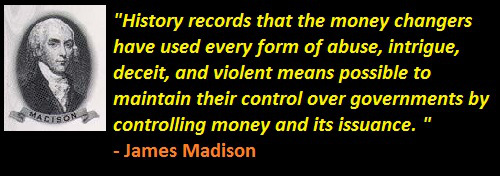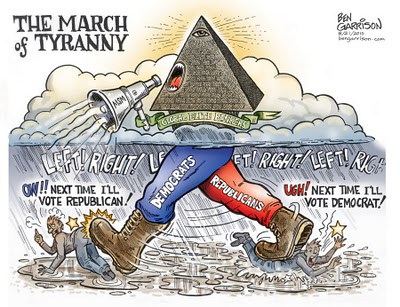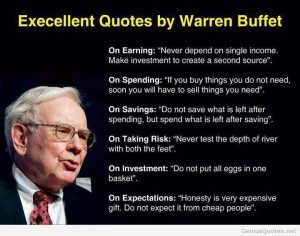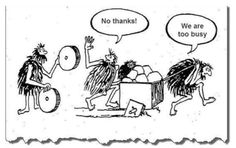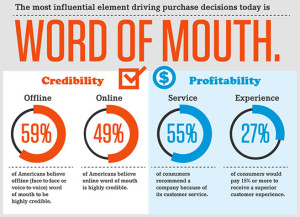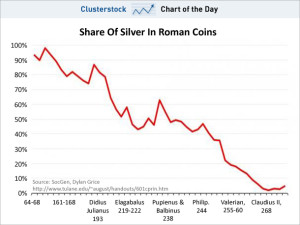The ownership and control of the Mass Media is one of the key ingredient in the ruling elites plan for control of Western Civilization. Most of the news, as a result, fits the “manufactured” world-view that the elites have carefully constructed for mass consumption. Before you think I have gone off the deep end, let me share some of thoughts from some of the best minds of the topic of media and control. Austrian economists Joseph Salerno described the ruling elites agenda in his brilliant introduction to one of Murray Rothbard’s classic works on money:
The ruling class, however, confronts one serious and ongoing problem: how to persuade the productive majority, whose tribute or taxes it consumes, that its laws, regulations, and policies are beneficial; that is, that they coincide with “the public interest” or are designed to promote “the common good” or to optimize “social welfare.” Given its minority status, failure to solve this problem exposes the political class to serious consequences. Even passive resistance by a substantial part of the producers, in the form of mass tax resistance, renders the income of the political class and, therefore, its continued existence extremely precarious. More ominously, attempts to suppress such resistance may cause it to spread and intensify and eventually boil over into an active revolution whose likely result is the forcible ousting of the minority exploiting class from its position of political power.
This is why the elites capture the society of every nation following the same 3M formula – Money, Media, Military. First, the ruling elite captures the Money supply, then it purchased the Mass Media, and finally, it buys the politicians to use the nation’s Military for its egregious ends. Is anyone surprised that the ruling elites, once they have captured the Money supply, would quickly use the fake money to buy controlling interest over the Mass Media. For the role of the Mass Media is to persuade the “dumbed down” people that society needs the ruling elites oversight. To illustrate, has anyone else noticed how often the Mass Media quotes intellectual experts to prove the validity of its messaging? Of course, what’s not revealed is that nearly all these so called experts in the university/corporate system are also bought and paid for by the ruling elites. Salerno, again, explained this phenomena:
Here is where the intellectuals come in. It is their task to convince the public to actively submit to State rule because it is beneficial to do so, or at least to passively endure the State’s depredations because the alternative is anarchy and chaos. In return for fabricating an ideological cover for its exploitation of the masses of subjects or taxpayers, these “court intellectuals” are rewarded with the power, wealth, and prestige of a junior partnership in the ruling elite. Whereas in pre-industrial times these apologists for State rule were associated with the clergy, in modern times—at least since the Progressive Era in the U.S.—they have been drawn increasingly from the academy. Politicians, bureaucrats, and those whom they subsidize and privilege within the economy thus routinely trumpet lofty ideological motives for their actions in order to conceal from the exploited and plundered citizenry their true motive of economic gain.

Noam Chomsky
As I researched the Mass Media’s influence within society, I think I was most shocked by the elites’ level of hubris. For instance, Walter Lippmann, the two time Pulitzer Prize winning journalist and author, wrote one of the classic works on why the Mass Media must manipulate public opinion. In the appropriately named book, Public Opinion (1922), Lippmann described the masses as a “great beast” and a “bewildered herd” that needed the governing class to direct them. Not surprisingly, he defined the ruling elite as “a specialized class whose interests reach beyond the locality.” Lippmann believed the ruling elites (a class of experts, specialists and bureaucrats) needed to circumvent the primary defect of democracy, the impossible ideal of the “omni-competent citizen.” In effect, the “bewildered herd” is mesmerized by the ruling elites into being merely “interested spectators of action,” rather than active citizens. Lippmann explained that participation should only be for the “the responsible man”, not the regular citizen.
The Mass media, subsequently, is no longer about reporting facts or highlighting competing visions for the future. Rather, it is used to produce ruling-elite approved propaganda to mislead the public into supporting initiatives that benefit the elites at the masses expense. Lippmann even coined the term “manufacture of consent” to explain how the elites manipulate public opinion through Mass Media. In other words, the Mass Media reports what the ruling elites want you to believe, not what necessarily is the truth. But don’t take my word for it, let’s have Lippmann explain “manufacture of consent” in his own words from his book, Public Opinion:
That the manufacture of consent is capable of great refinements no one, I think, denies. The process by which public opinions arise is certainly no less intricate than it has appeared in these pages, and the opportunities for manipulation open to anyone who understands the process are plain enough. . . . as a result of psychological research, coupled with the modern means of communication, the practice of democracy has turned a corner. A revolution is taking place, infinitely more significant than any shifting of economic power. . . . Under the impact of propaganda, not necessarily in the sinister meaning of the word alone, the old constants of our thinking have become variables. It is no longer possible, for example, to believe in the original dogma of democracy; that the knowledge needed for the management of human affairs comes up spontaneously from the human heart. Where we act on that theory we expose ourselves to self-deception, and to forms of persuasion that we cannot verify. It has been demonstrated that we cannot rely upon intuition, conscience, or the accidents of casual opinion if we are to deal with the world beyond our reach.
Lippmann, however, was not alone in revealing the ruling elites plan at the beginning of the 20th century. Although the ruling elites have learned to be more careful, it still isn’t too difficult to piece together their revealed agenda. Perhaps no one was clearer than Edward Bernays, the nephew of Sigmund Freud and father of “public relations”. Without apology, he applied his uncle’s teaching and techniques to alter the subconscious of the customers of his client’s product to encourage a buying decision. Bernays boasted of his ability to control the masses in his ruling elite classic book Propaganda:
The conscious and intelligent manipulation of the organized habits and opinions of the masses is an important element in democratic society. Those who manipulate this unseen mechanism of society constitute an invisible government which is the true ruling power of our country. We are governed, our minds are molded, our tastes formed, our ideas suggested, largely by men we have never heard of. This is a logical result of the way in which our democratic society is organized. Vast numbers of human beings must cooperate in this manner if they are to live together as a smoothly functioning society. Our invisible governors are, in many cases, unaware of the identity of their fellow members in the inner cabinet.
The final example of Mass Media control is my personal testimony. It was 2008, in the middle of a multimillion dollar legal dispute between a billion dollar company and the top leaders of my company, when I was contacted by Forbes Magazine. Needless to say, I was shocked to hear this large corporate magazine (that reports upon billion dollar companies) wanted to write about a leadership company which barely surpassed 40 million dollars at the time. When I first asked the reporter why she picked us, she replied she was interested in network marketing and the leadership and Christian principles I utilized. I thought this was odd but naively agreed to help. After interviewing me for over six hours, she had the gist of our business, the dispute with our former supplier, and any supporting evidence I had. Strangely, over the course of our discussion, it came out that she knew nothing about network marketing (the business I was in), had never heard of John Maxwell (the number one leadership trainer and author), nor had ever heard of Pastor Bill Hybels (the pastor of one of the largest churches in America (even though she lived in Chicago where his church is located) who had selected Chris Brady and my NY Times bestseller Launching a Leadership Revolution as one of his best books for 2007.
Curious, I asked her why she would do an article about three subjects she admittedly knew nothing about. At first, she started explaining that her superiors asked her to write it, but then I think she realized this wouldn’t jive with what she previously had said. She abruptly broke off the conversation and simply said she was doing her job. Of course, now I realize the article could have been written without interviewing me at all since it included practically nothing from what we discussed. Something, however, wasn’t adding up. Why would someone write a nonsensical article in a major magazine on subjects she admitted to knowing nothing about nor have any interest in? I smelled a rat. Several months later, I found the rat. In the strangest of coincidences (I smile when I say that 🙂 ), I discovered the company I was in the legal dispute with had run expensive centerfold advertisements in Forbes magazine. Whoa! Now I understood how Mass Media manufactures consent first hand. 🙂
Nevertheless, one of the key lessons a leader learns on his journey is how to turn the lemons of life into lemonade. In this case, my personal exposure to Mass Media shenanigans led me to study the role of media in controlling what and how people think. This eventually led to the Financial Matrix through the control of Money, Media, and the Military. With our liberties at stake the masses can and must learn to think for themselves. And, despite what the ruling elites have done to “dumb down” our educational system, the people are still capable of learning, doing, and teaching leadership. In fact, I believe the key to breaking the Financial Matrix is for a group of men and women to launch a leadership revolution through serving others rather than manipulating or coercing as the elites do. While this isn’t an easy task, I know it’s possible because I have spent the last 20+ years of my life helping people lead themselves, their families, and their businesses.
I reject the theory that the masses are sentenced to be part of the “great beast” the “bewildered herd” which must leave all the thinking to the elites. Instead, the LIFE Leadership founders created a company that believes everyone is called to lead wherever they are and can with the right information applied consistently. Don’t be scared of the word leadership, for it merely means serving others. We can all do that. I cannot imagine a better purpose to fulfill in life than building LIFE Leadership and helping people break free from the “bewildered herd” that are trapped in the Financial Matrix.
Sincerely,
Orrin Woodward








